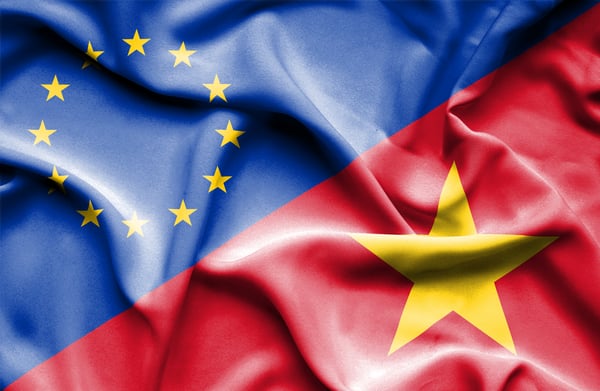The EU-Vietnam Free Trade Agreement (FTA) was published in the Official Journal of the European Union on June 12, 2020, and will enter into force upon the conclusion of the ratification procedure by Vietnam. This marks the second FTA that has been concluded with a Southeast Asian country, the first being with Singapore last November. The EU-Vietnam FTA contains full dismantling of nearly all tariffs except for a few tariff lines that are subject to duty-free tariff rate quotas. This article outlines the particulars of the agreement.

EU Exports to Vietnam
- 65% of EU exports to Vietnam are coming in duty free from day one.
- The duty on remaining trade – with the exception of a few products – will be phased out over a period of up to 10 years.
EU Imports from Vietnam
- The EU liberalised 71% of its imports from Vietnam from day one.
- Duty on 99% of imports will be phased out over seven years.
Rules of Origin
In order to benefit from the tariff exception, goods must fulfil the rules of origin. The main features are the same as the rules of origin of the EU’s General Scheme of Preferences (GSP) as well as the EU’s FTA with Singapore, with some exceptions for specific products.
To prove the origin of the goods, EU exporters will need to use the system of certification of origin of goods based on a principle of self-certification (The Registered Exporter system, known as the REX system). Vietnamese exporters will need government certificates (Certificates of Origin EUR.1). Vietnam can introduce self-certification whenever it is ready to do so.
Cumulation
The protocol on origin provides for bilateral cumulation as well as cumulation with South Korea in relation to fabrics used for producing garments after complying with certain administrative requirements. Vietnam will also benefit from cumulation with ASEAN countries with which the EU has an FTA in force for two fishery products: squid and octopus. A review clause foresees the possibility of agreeing to extended cumulation for more products and/or more countries with which both parties have an FTA in the future.
Duty Drawback
Duty drawback is allowed, which means that exporters using inward processing schemes for subsequent export to Vietnam or to the EU may benefit from suspension or reimbursement of duties applied to non-originating inputs used in manufacturing if they have complied with Product Specific Rules.
History
The Free Trade Agreement (FTA) between the European Union and the Socialist Republic of Vietnam was signed on June 30, 2019. The European Parliament subsequently gave its consent to the Agreement on February 12, 2020 and the Free Trade Agreement was concluded by Council on March 30, 2020. Finally, the FTA was published in the Official Journal of the European Union, L 186 of 12 June 2020. The FTA includes commitments from Vietnam regarding intellectual property protection, labour rights, and sustainability, with actions to be taken in the event of human rights breaches.
Is trade with Vietnam relevant to your business? C4T can help you evaluate the benefits of this agreement on your business activities and assist with the request of the necessary authorisations.
